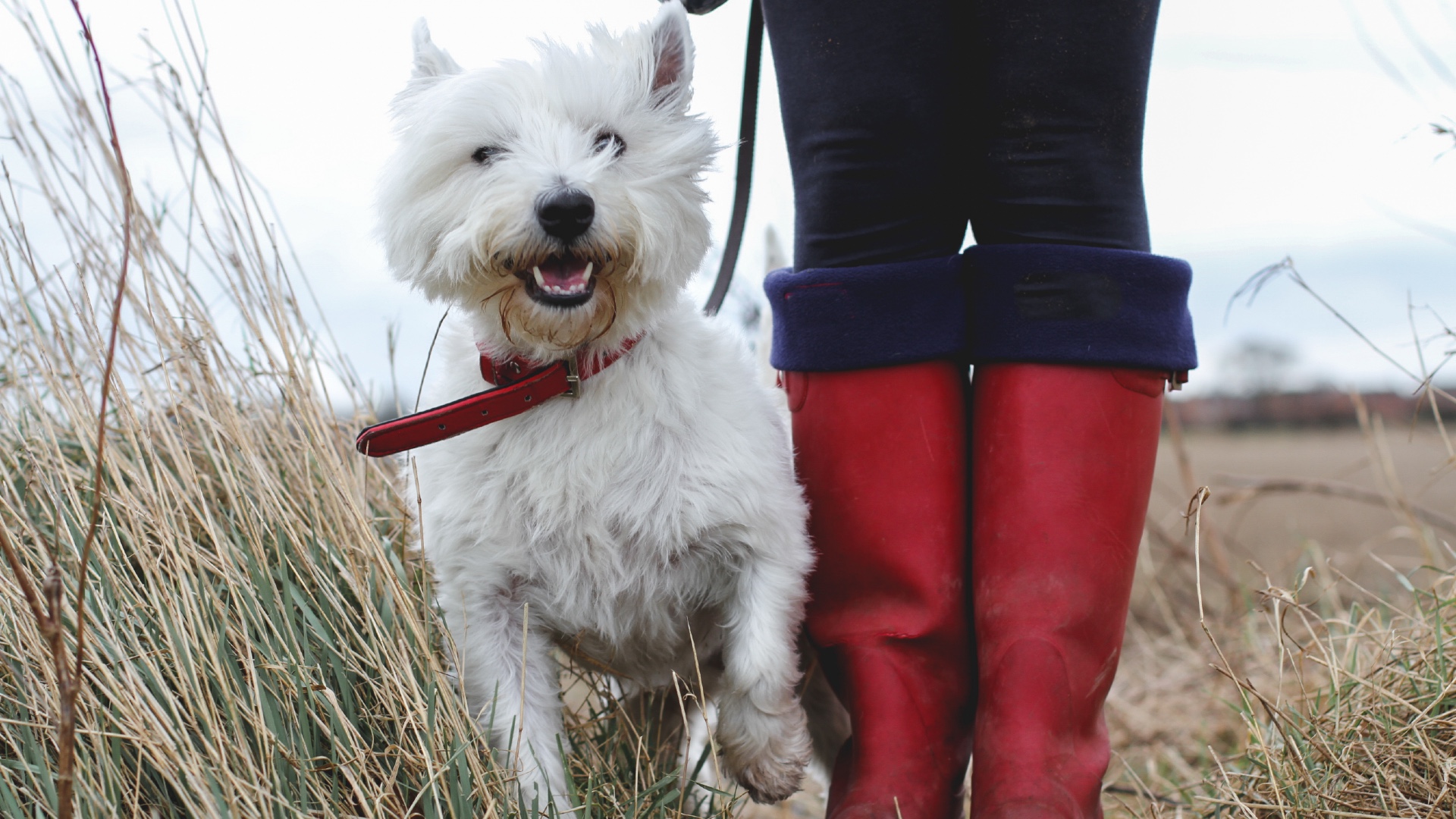Want to enjoy happy, stress-free walks with your dog? Then you need this trainer’s five clever tips
Put the fun back into those daily walks with your dog with these simple tips from an expert trainer

While having a canine companion has been proven to deliver to us humans a host of physical and mental health benefits, there are also some challenges that come with being a pet parent that we often don't speak about.
As a dog owner, you may have envisaged that welcoming a fur friend into your family would involve a lot of blissful hours spent out walking together. And while some pet parents do indeed strike it lucky straight out of the gate on that front, many of us find walking our dogs a source of frustration.
From trying to rectify some of the most common loose leash walking mistakes to figuring out how to stop a dog from jumping up, walking your dog may be nothing like you expected it to be. Although this can feel disappointing, expert dog trainer Andrea Isabell says there is a solution.
In a post shared to Instagram, Isabell says that your daily walk with your dog is one of the best places to strengthen the bond you share with them. Even if walking hasn't gone well up until this point, it's absolutely possible to turn things around and enjoy stress-free strolls together. Read on to find out how...
A post shared by Andrea Isabell (@canyonscaninetraining)
A photo posted by on
1. Consider what the leash means to your dog: "If your dog starts whining, circling, and zooming around, check your energy," advises Isabell. "Do you amp your dog up? If you are trying to improve your dog's walk, start here. Leash them and don't go anywhere. Wait until they calm back down. Don't say anything. You could put your dog on place for 10 minutes to wind down before you calmly pick up the leash and guide them to the door."
2. Stop at the door: "When you put your hand on the door and begin to open it, where is your dog? Are they ready to break through without any recognition that you are there? Teach them threshold manners by using your calm energy through body language and spatial pressure, with support of the leash to have them respect the threshold. Organic eye contact is the password to go through! Invite them through calmly, but don't stop there. Move through the door and use the leash to guide your dog back to sit so you can close the door."
3. Warm up the walk: "For many dogs, the juxtaposition between in the home and outside is huge," explains Isabell. "Don't rush to just start walking. Take the time to practice leash drills like 180's, back aways, and reinforcing eye contact by rewarding their connection. Take notice of their body language. Are their ears forward and eyes immediately scanning? Know your dog. Are they nervous, reactive, pushy? Using your tools and communication, work on keeping your dog's mindset calm and focused. The walk is your bonding time to lead them. The leash should represent connection, not conflict."
Get the best advice, tips and top tech for your beloved Pets
4. Think about who's leading who: "Where is your dog when walking? If they're out in front and you're dealing with leash reactivity or other negative behaviors, allowing them to lead the walk sets them up for failure. Build a follow state of mind and help them stay in it. Using your tools that support communication, take your time to build it back when they become disconnected. Your dog needs you to call the shots, especially if they have a history of making poor decisions."
5. Build in sniffing time: "But if you're working on your relationship and behavior issues, make it your idea," Isabell advises. "Know successful places to give your dog the freedom to sniff and potty. Think of a 90/10 0r 80/20 split depending on your dog and relationship. Just don't allow them to drag you wherever they want. If they do start to dictate, use that opportunity to rebuild connection instead of arguing on the leash about it. Then bring them to a spot you choose and release them."
For more great canine content, be sure to check out our guide to the three reasons your dog’s recall isn’t reliable (and what to do about it).

Kathryn is a freelance writer who has been a member of the PetsRadar family since it launched in 2020. Highly experienced in her field, she's driven by a desire to provide pet parents with accurate, timely, and informative content that enables them to provide their fur friends with everything they need to thrive.
Kathryn works closely with vets and trainers to ensure all articles offer the most up-to-date information across a range of pet-related fields, from insights into health and behavior issues to tips on products and training.
When she’s not busy crafting the perfect sentence for her features, buying guides and news pieces, she can be found hanging out with her family (which includes one super sassy cat and a kitten), drinking copious amounts of Jasmine tea and reading all the books.
She has written for a range of publications, including Fit&Well, Top Ten Reviews, LiveScience, Goodto, and Product Hunt.
